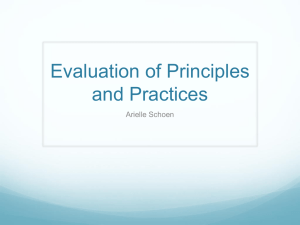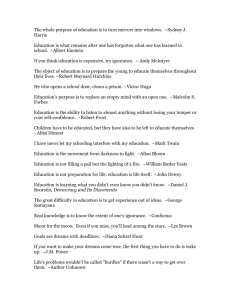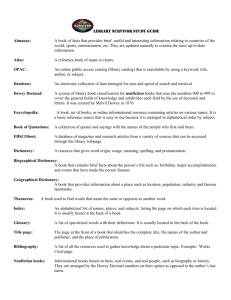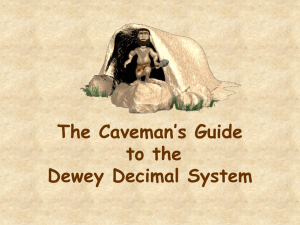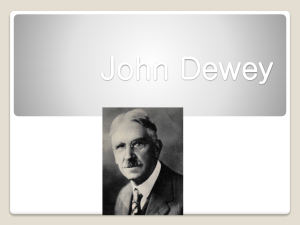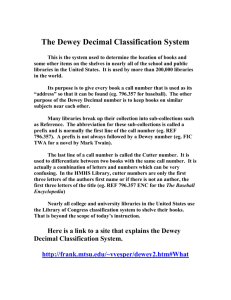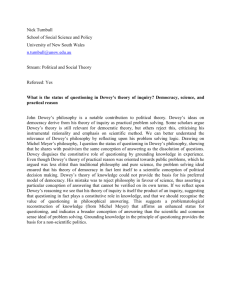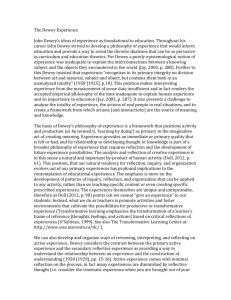DoingversusThinkingPres
advertisement
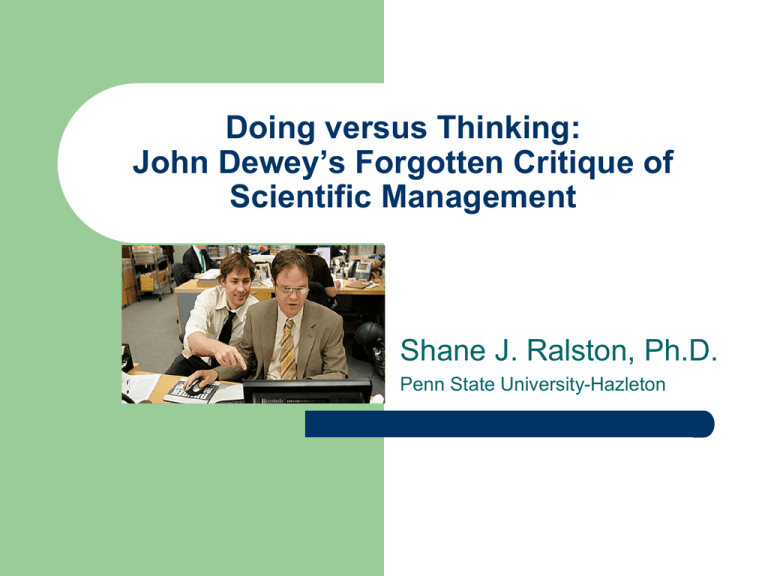
Doing versus Thinking: John Dewey’s Forgotten Critique of Scientific Management Shane J. Ralston, Ph.D. Penn State University-Hazleton Outline of the Paper Frederick Winslow Taylor: Father of Scientific Management (SM) John Dewey: Philosopher of Science and Management Similarities/differences between their two accounts of SM -Dewey, various texts on logic/inquiry/education -Taylor,The Principles of Scientific Management (PSM) (1911) - Dewey’s critique of Taylorism/SM in Democracy and Education (DE) (1916) Q: What are the implications of the Dewey-Taylor comparison for organizational theory/human resource administration/industrial relations? The Dewey-Taylor Comparison Initial points of comparison: – – – – Emphasis on experimental inquiry Faith in technological progress Professed commitment to industrial democracy, worker welfare Belief that scientific method should be extended into all areas of life No consensus among commentators (Patricia Shields, Keith Snider, G. Alan Tarr) Dewey’s trenchant critique of Taylorism in DE weakens the comparison Nevertheless, the implications of the comparison could prove fruitful Deweyan Inquiry and SM 3. Suggesting a solution Dewey’s 5 Stages of Inquiry 1) 2) 3) 4) 5) Felt difficulty Locate and define problem Suggest possible solution(s) Refine suggestion(s) Test suggestion(s) Dewey: “Management . . . amount[s] to rule-of-thumb procedure, to routine. If circumstances resembled the past, it might work well enough . . . “ (DE) 4. Refining the suggestion Secondary, reflective experience 2. Specifying the problem 1. Indeterminate situation 5. Testing the suggestion Primary, nonreflective experience Settled situation/ Warranted assertion Dewey: “Democracy is a way of life controlled by a working faith in the possibilities of human nature” Taylor and the “One Best Way” Taylorism = management consulting (Kanigel, Lepore) SM= “philosophy in industrial management” Four principles 1) 2) 3) 4) One best way Workers selected scientifically Worker pay is a function of worker efficiency Congenial worker-management relations Taylor’s time-motion studies 1) 2) 3) Catalogue basic movements Establish baseline data for time each movement takes Experimentally determine standard time, quickest time = quota Dewey’s Critique of Taylorism Concedes that the division of labor/standardized work procedures are necessary for industrial efficiency, but ... Workers must derive intrinsic rewards from work - Extrinsic rewards favor physical efficiency, end is independent of action - Social efficiency also matters - Latent mind/body dualism in Taylor’s account No one best way - Always multiple methods for increasing productivity - Different conception of the “labor problem” - Better to empower employees by discovering what individually motivates them, rather than construct blanket systems of reward and punishment Scientific Management in the Modern Workplace – From Taylor to Dewey Widespread use of time studies and efficiency consultants, esp. in fast food industry McDonaldization of many employment sectors (auto, healthcare, bicycles) Dewey’s approach = closer to Human Relations Theory than SM 1) Emphasizes intrinsic (not extrinsic) rewards, generate a positive work environment (similar To Elton Mayo) 2) Supervisors should form supportive relationships with subordinates, empower, not command (similar to Fritz Roethlisberger) 3) Develop informal/collaborative groups, promote workplace democracy (similar to Mary Parker Follet) 4) Motivational strategy that integrates the end into the action, cultivates moral imagination Conclusion Danger: Treating Taylorism as synonymous with SM Key difference between Taylor and Dewey Prospect of a joint Taylor-Dewey approach to human resource management and industrial relations Questions?
